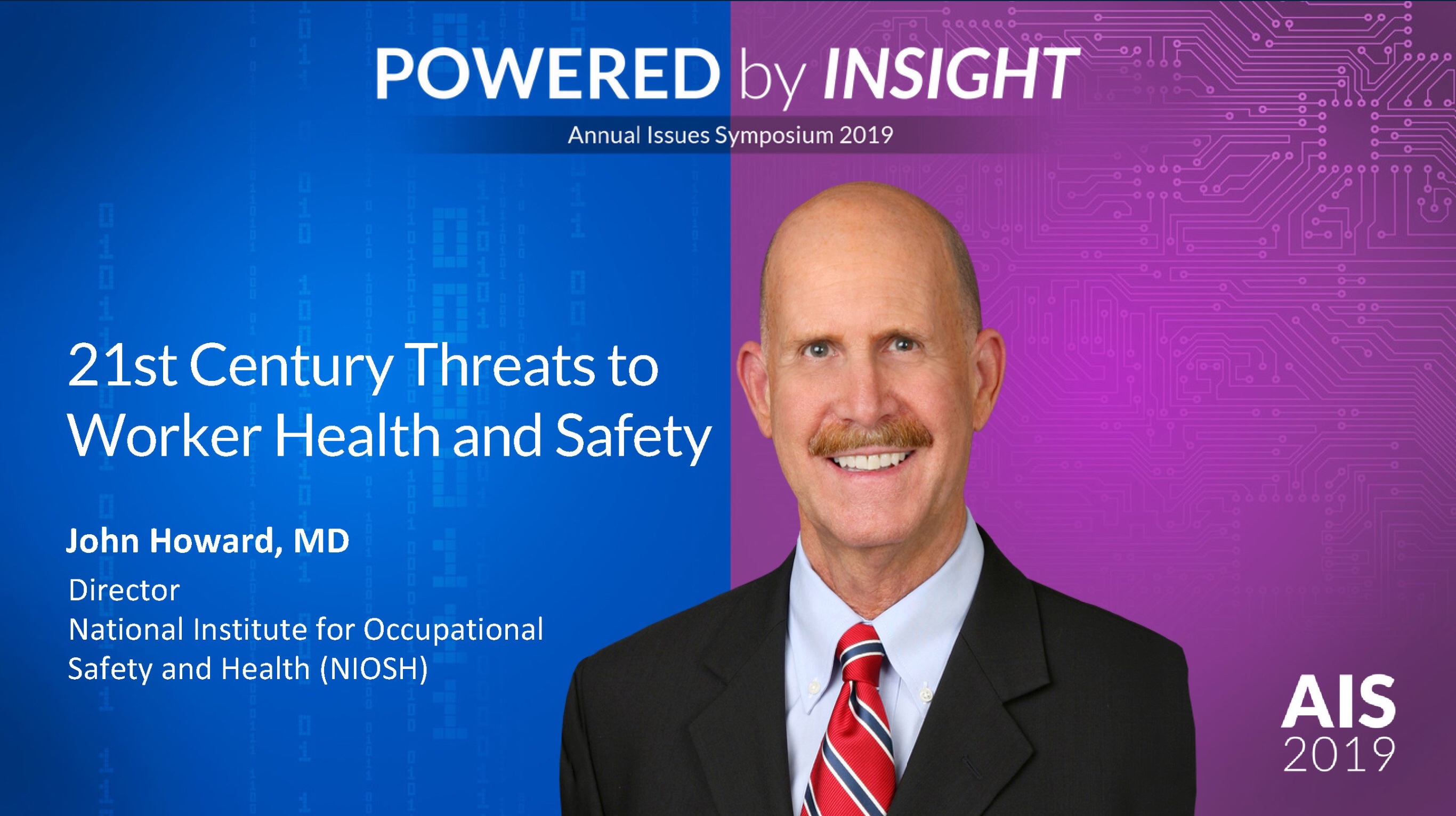21st Century Changes to Worker Health and Safety
At the 2019 NCCI Annual Issues Symposium, Dr John Howard, Director of the National Institute for Occupational Health and Safety, talked about emerging technology that will impact worker health and safety.
Robotics have advanced so that they can perform three basic tasks.
- Sensing which is done through interpretation of data from environmental sensors.
- Thinking is done thought use of forms of artificial intelligence.
- Acting is done through effectors for the robots.
Robots have superior performance to human workers when it comes to mundane, repetitive and precise jobs. They can also do the job cheaper than humans.
Sensor technology is expanding so that they can detect changes in the environment, be placed in vehicles, and also can be wearable by employees. These sensors can provide a wide variety of feedback to assist with workplace safety. Sensor data is easily uploaded to the cloud so it can be interpreted and corrective action recommended.
There has been an explosion of the use of AI in manufacturing since 2010 because of advances in processing speed, practically infinite data storage capacity, and the use of the cloud for data communication and sharing.
In November 2018 the US Department of Commerce proposed restrictions on the export of AI technologies as they see this as a potential national security issue.
There are several types of robotics being used in industry today:
- Traditional industrial robots – These are fixed position machines that do not interact with humans.
- Collaborative robots – These are designed to work alongside humans and are controlled by humans, algorithms or both. They are equipped with sensors to stop the robot when contact with the human occurs.
- Service robots – These include autonomous ground vehicles such as large equipment being used in mining operations that are operated remotely by workers. There are issues surrounding self-driving vehicles as you cannot write algorithms that anticipate every possible scenario. Also, computer vision is not advanced enough to distinguish between different objects. Another service robot being used frequently in industry is drones. There are many potential risks associated with the operation of drones.
- Social robots – These machines are designed for social interaction with humans. They are programmed to be able to analyze human emotions based on tone and facial expressions.
- Wearable robotics – This is mainly exoskeletons. They have tremendous potential in the military and industrial settings. There is also potentials for these to be used in a healthcare setting to assist with patient lifting. One of the problems with exoskeletons is that they are very heavy which limits their limitations.
The increased use of robots could replace workers in more dangerous occupations. These are not without concerns because of the potential for robot related human injuries. It is expected that rapid advances in technology will outpace guidance and standards for the use of these devices. There are also potential ethical challenges when it comes to advance robotic in terms of how they prioritize issues of human health and safety.
Other changes being seen in the manufacturing environment is 3D printing. The safety issues around this is that there have not been sufficient studies of the safety of the materials used in this manufacturing.



